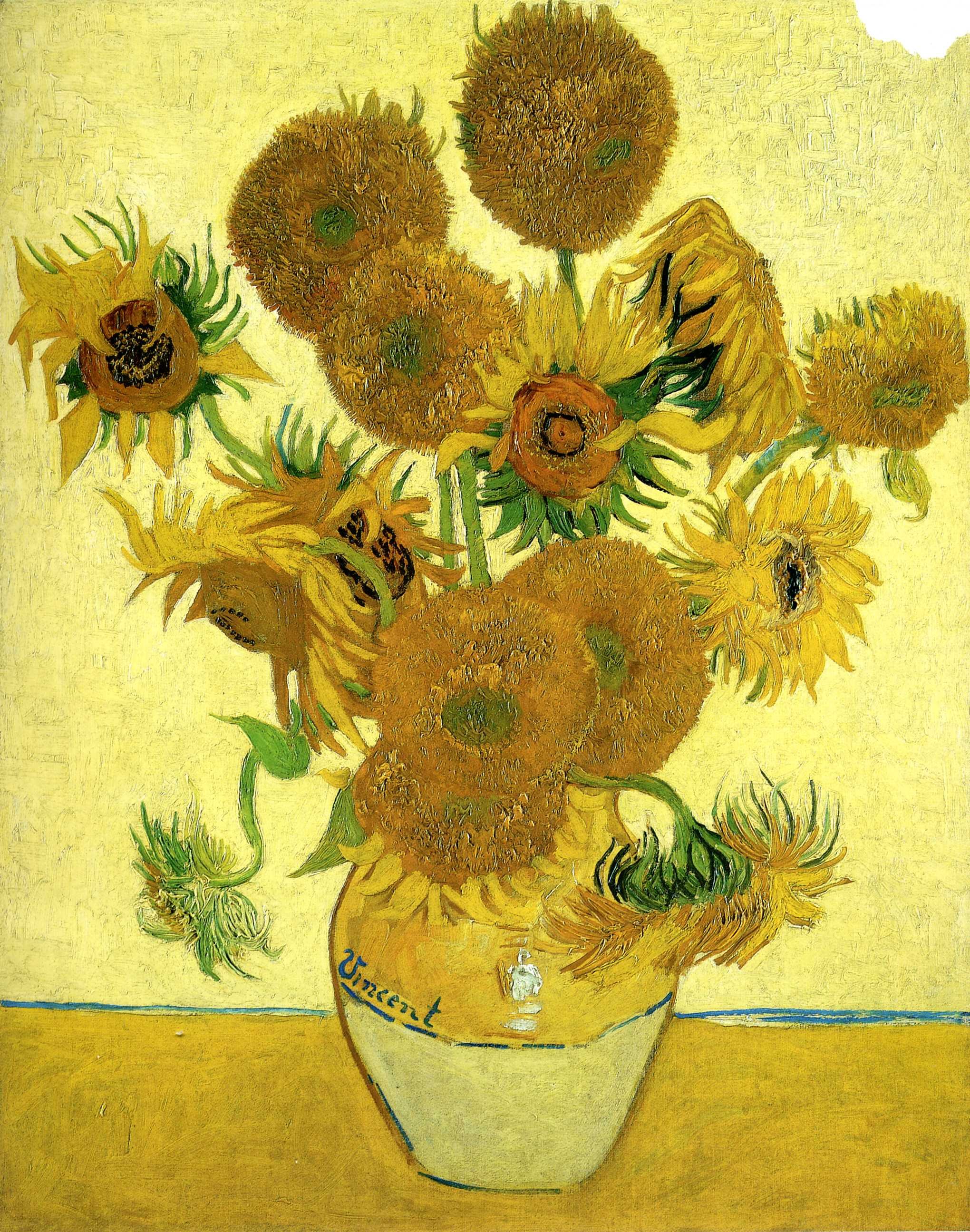“What Is Worth More: Art or Life?”
Vincent van Gogh, Still Life - Vase with Fifteen Sunflowers (1888), National Gallery, London (Wikiart)
Right behind Nelson’s Column on London’s Trafalgar Square is an enormous building. Its columns and imposing cupola make it look like a temple, and in a way, it is: London’s National Gallery houses one of the most important art collections in the world, so you could say that it is a temple to art. But on 14 October, visitors to room 43 got more than they bargained for: two young women planted themselves in front of Vincent van Gogh’s iconic painting “Sunflowers” and took off their large, dark jackets, revealing white t-shirts with a skull and the logo “Just Stop Oil.” Next, each of them quickly opened a can of tomato soup – and proceeded to throw the soup directly at the painting. They then climbed over the rope separating the spectators from the painting, knelt on the floor, quickly covered one hand each with glue, and glued their hands to the wall. One of them proclaimed: “What is worth more: art of life? Is it worth more than food, worth more than justice? Are you more concerned about the protection of a painting, or the protection of our planet and people?”
No damage was done to the painting, which is protected by glass, even though some minimal damage was done to the frame. The soup throwing activists have made it very clear that they would never have thrown soup at the beloved painting if it hadn’t been protected behind glass: “I recognise that it looks like a slightly ridiculous action. I agree, it is ridiculous. But we are not asking the question: should everybody be throwing soup on paintings. What we are doing is getting the conversation going so we can ask the questions that matter.” Just Stop Oil demands that the UK government immediately stop consenting to new oil and gas projects.
A few days after the tomato soup action, two climate activists in Potsdam, Germany, threw mashed potatoes at a painting by Claude Monet (without damage to the painting), and on 27 October, in The Hague in the Netherlands, an activist attempted to glue his shaven head to Johannes Vermeer’s “Girl with a Pearl Earring” while, in a bizarre twist, another activist poured soup over him. Again, the painting was protected by a layer of glass. These are just the latest in a series of actions targeting paintings to create attention grabbing headlines. So far, actual destruction of the paintings doesn’t seem to be the activists’ intention: they want to shock to get people thinking and talking.
Today’s activists are part of a long tradition of iconoclasm, “image breaking,” the destruction of images for political or religious reasons. One of their more extreme predecessors was Mary Richardson, a suffragette fighting for women’s right to vote: in 1914, Richardson walked into the National Gallery and slashed Diego Velázquez’s painting “Rokeby Venus” seven times with a meat cleaver. Created around 1650, the painting shows the goddess Venus from the back, reclining on a bed or sofa in the nude. Richardson attacked the painting to protest the arrest of suffragette leaders Emmeline Pankhurst – adding later that she was also angry about the way male gallery visitors stared at Venus.
